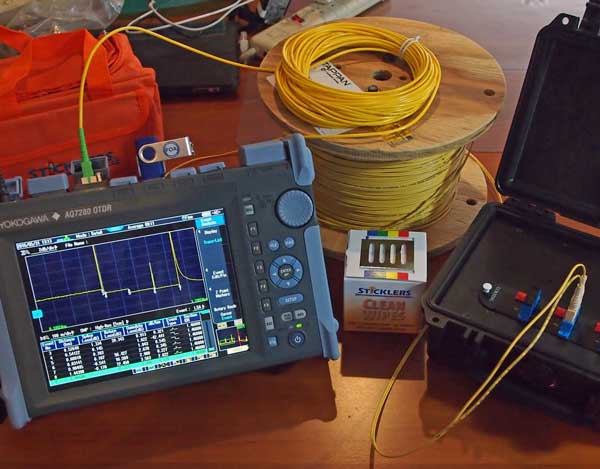Understanding the price behind robotic vision technology for industries
All You Required to Find Out About Robotic Vision and Its Applications in Advanced Optical Dimension Equipments
Robotic vision represents a significant innovation in the crossway of computer system vision, expert system, and artificial intelligence. This innovation boosts the accuracy of optical dimension systems, allowing real-time data analysis and enhanced quality assurance. Its effect spans numerous markets, from manufacturing to medical care. However, the progressing landscape of robot vision questions about future capacities and applications (optical measurement system). What developments exist in advance in this transformative area?
Understanding Robotic Vision: Key Concepts and Technologies
Robotic vision incorporates the innovations and techniques that make it possible for devices to translate and understand aesthetic details from their environment. This area incorporates aspects of computer vision, expert system, and artificial intelligence to help with automatic decision-making based on visual information. Key principles consist of picture processing, which entails the enhancement and analysis of images to remove significant attributes, and item acknowledgment, which permits machines to identify and classify objects within a scene.

The Assimilation of Robotic Vision With Optical Measurement Equipments
As industries progressively demand accuracy and efficiency, the assimilation of robot vision with optical dimension systems has actually become a transformative technique. This synergy permits robotics to regard and translate their surroundings, enhancing the ability of optical measurement systems to assess and assess things with unequaled precision. By equipping optical sensing units with sophisticated imaging technologies, robotic vision makes it possible for real-time information collection and processing, promoting prompt adjustments to measurement parameters.
Furthermore, the combination encourages automated systems to detect variants in dimensions, surface area top quality, and positioning, which are critical in top quality control processes. Enhanced algorithms, such as artificial intelligence, additional increase this combination by improving the systems' capacity to adjust to different settings and scenarios. Consequently, the combination not just streamlines dimension processes yet also lessens mistakes, making sure that items fulfill strict sector standards, consequently strengthening the role of robotic vision in the future of optical dimension systems.
Applications of Robotic Vision in Production
In modern-day production atmospheres, the use of vision systems has reinvented manufacturing procedures by allowing makers to perform jobs with impressive precision and rate. Robotic vision systems are increasingly used for quality assurance, where they check items for defects and guarantee adherence to specifications. These systems make use of video cameras and progressed algorithms to assess items in real-time, considerably reducing the danger of human mistake.
Additionally, robot vision assists in automation in assembly lines, permitting robots to accurately determine parts and construct them with marginal downtime. This modern technology likewise improves supply monitoring, as vision systems can monitor supply degrees and spot disparities, ensuring a seamless supply chain.
Additionally, robot vision aids in the application of clever factories, where information from vision systems can be incorporated with other technologies to enhance workflows. Overall, the applications of robot vision in making show its important role in improving effectiveness, quality, and efficiency throughout various fields
Robotic Vision in Healthcare: Transforming Patient Care

In rehab, robot vision aids in keeping an eye on individual progress and customizing therapy sessions to specific needs. It sustains medical specialists by automating tasks such as data collection and patient tracking, enabling more time to concentrate on direct client communication. In addition, robot vision enhances telemedicine by making it possible for remote medical diagnosis and online consultations, bridging the space between clients and health care providers. In general, the application of robot vision in health care is revolutionizing individual care, causing enhanced results, efficiency, and person contentment.
Future Patterns and Growths in Robotic Vision Innovation
The fast development of robotic vision technology promises to even more enhance its applications throughout different markets, consisting of healthcare. Future trends indicate a substantial change towards incorporating expert system and artificial intelligence, allowing systems to discover from large datasets and boost accuracy gradually. Enhanced sensor innovations and deep understanding formulas are anticipated to improve object acknowledgment capacities, permitting robots to translate complex settings better.

Furthermore, the assimilation of augmented reality (AR) with robot vision will site here likely revolutionize exactly how robots help in operations and diagnostics. This harmony will certainly help with real-time data visualization, improving decision-making processes. In addition, miniaturization of elements will lead to more small and versatile robotic vision systems appropriate for a variety of jobs. As these innovations unfold, sectors will witness increased automation and effectiveness, strengthening robot vision as a foundation of ingenious technological options.
Often Asked Inquiries
What Are the Key Parts of a Robot Vision System?
The major components of a robot vision system go to the website include cameras for picture capture, cpus for information evaluation, formulas for interpretation, and actuators for movement. Together, these components allow robotics to perceive and interact with their atmosphere properly.
Just How Does Robotic Vision Improve Precision in Measurements?
Robotic vision improves dimension accuracy by making use of innovative imaging modern technologies, making it possible for exact things detection and spatial analysis. This ability lowers human mistake, raises repeatability, and allows for real-time changes, eventually enhancing overall dimension dependability and performance.
What Industries Benefit A Lot Of From Robotic Vision Technology?
Numerous sectors profit significantly from robot vision modern technology, consisting of manufacturing, healthcare, agriculture, and logistics. These industries utilize improved precision, performance, and automation, causing boosted efficiency and reduced functional prices in their corresponding procedures.
Can Robotic Vision Equipments Operate In Low-Light Conditions?
Robotic vision systems can certainly work in low-light problems, using innovative sensors and formulas to improve photo clearness. This capability permits them to do effectively in numerous settings, including commercial and surveillance applications, despite having marginal lighting.
What Are the Prices Connected With Applying Robotic Vision?
The costs related to carrying out robotic vision differ significantly, affected by components such as electronic cameras, software application, and integration. Additional expenses consist of maintenance, training employees, and possible upgrades to existing systems, which visit site can build up with time.